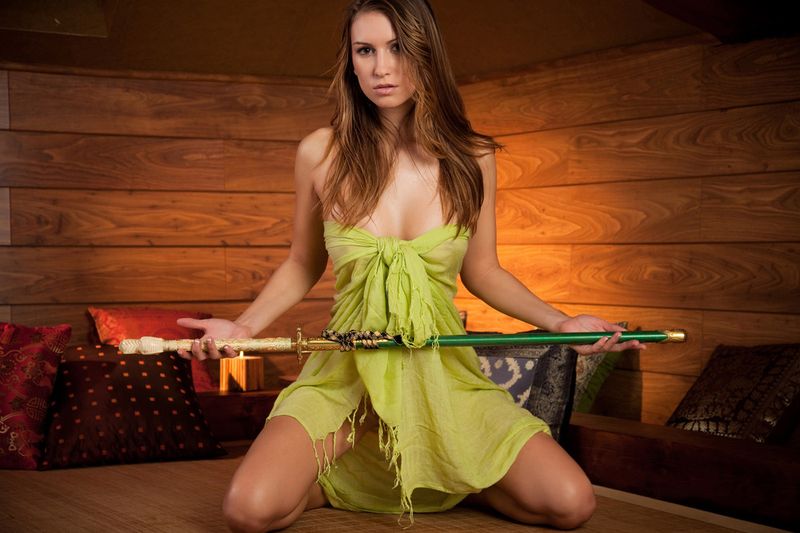|
|
Young Brunette Girl With A Japanese Katana Sword Reveals In The Traditional Washitsu Room With Tatami Flooring
|
The length of the katana blade varied considerably during the course of its history. In the late 14th and early 15th centuries, katana blades tended to be between 70 to 73 cm (27½ to 28½ in.) in length. During the early 16th century, the average length was closer to 60 cm (23½ in.). By the late 16th century, the average length returned to approximately 73 cm (28½ in.).
The katana was often paired with a similar smaller companion sword, such as a wakizashi or it could also be worn with the tantō, an even smaller similarly shaped sword. The pairing of a katana with a smaller sword is called the daishō. The daisho could only be worn by samurai and it represented the social power and personal honor of the samurai.
• Moden katana (gendaito)
During the Meiji period the samurai class was gradually disbanded, the Haitōrei Edict in 1876 forbid the carrying of swords in public except for certain individuals such as former samurai lords (daimyo), the military and police. Skilled swordsmiths had trouble making a living during this period as Japan modernized its military and many swordsmiths started making other items such as farm equipment, tools, and cutlery. Military action by Japan in China and Russia during the meiji period helped revive interest in swords but it was not until the showa period that swords were produced on a large scale again.Japanese military swords produced between 1875 and 1945 are referred to as guntō (military swords).
|
|









